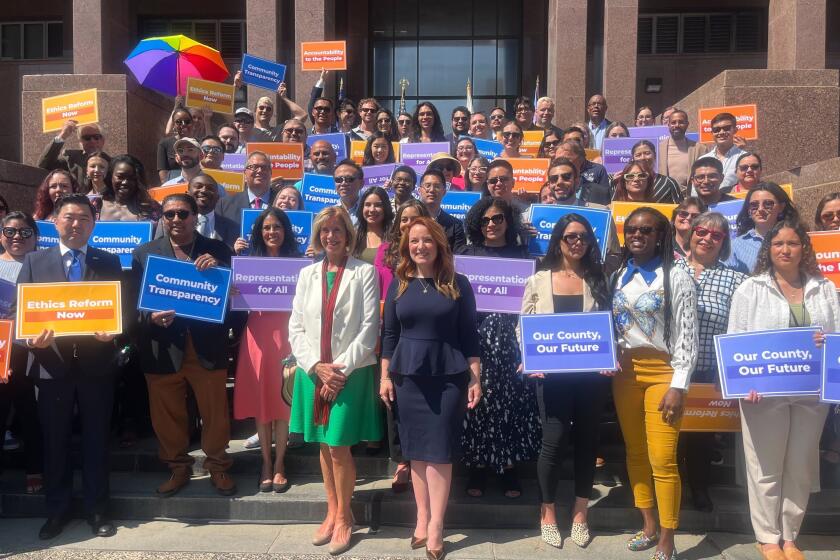‘68 to ’08 -- we’re not finished
- Share via
The year was 1968, and students at public high schools in East L.A. were banned from speaking Spanish in the hallways -- at risk of a paddling from administrators who embraced corporal punishment. The students were overwhelmingly Mexican American; the administrators were, without exception, white. Those students struggled against a host of daily humiliations: locked bathrooms during lunchtime, severely overcrowded classrooms and teachers who told them college was not a realistic option.
That March, students from every East Los Angeles high school had had enough. In what became known as the East L.A. walkouts, or Chicano blowouts, students from Lincoln, Roosevelt, Wilson, Garfield and Belmont high schools walked out of their classes.
In the days that followed, more than 20,000 students at 15 schools walked out to protest educational inequity. Their demands were simple: Provide a fine education with equal resources so all students had a chance to attend a four-year university. The L.A. Unified School District’s Board of Education was confronted with a community united in its demand for change.
The East L.A. student protest was one of the largest demonstrations of its kind. It sparked real changes, including the hiring of more Latino administrators, the right to speak Spanish on campus and a ban on corporal punishment. Greater awareness of the overcrowded and substandard facilities fostered successful efforts to build new schools on the Eastside.
But four decades later, as we honor and remember those courageous students, many of these same challenges remain.
According to a recent report by the community organization InnerCity Struggle, done in conjunction with UCLA’s Institute for Democracy, Education and Access, only 16 out of every 100 ninth-graders enrolled in a high school on the Eastside graduate eligible for college. Sixty-four out of 100 drop out. These grim statistics threaten to worsen as our educational system statewide faces the largest budget cuts we have seen in recent times. (California already ranks 46th in the nation in per-pupil spending, according to a 2008 Education Week report.)
Despite our challenges, L.A. Unified must be a leader in urban school reform so that we can finally realize the goals of the ’68 protests: giving all our youth the support and opportunities they need to learn and succeed.
Our communities are energized for reform. Over the years, voters have supported four bond measures to fund construction of more than 100 schools, enabling the district to end forced busing and bring our schools back to traditional calendars. A 2005 policy called “A-G for All,” when fully implemented, will ensure that all students have access to the college-prep classes required for admission to the UC and Cal State systems.
This year, the board has increased the district’s focus on meeting the needs of English learners, who make up the majority of our students. We’re also trying new strategies to accelerate academic achievement, build ties to the community, increase flexibility of resources and strengthen autonomy and accountability at the school level.
Sal Castro, the Lincoln High teacher who led the walkouts, said, “We knew something different had to happen.” His words resonate today. We all have much work to do to reach 100% graduation for all LAUSD students. But this is a moment when we can take substantial steps forward. Si se puede! Yes, we can!
More to Read
Sign up for Essential California
The most important California stories and recommendations in your inbox every morning.
You may occasionally receive promotional content from the Los Angeles Times.













